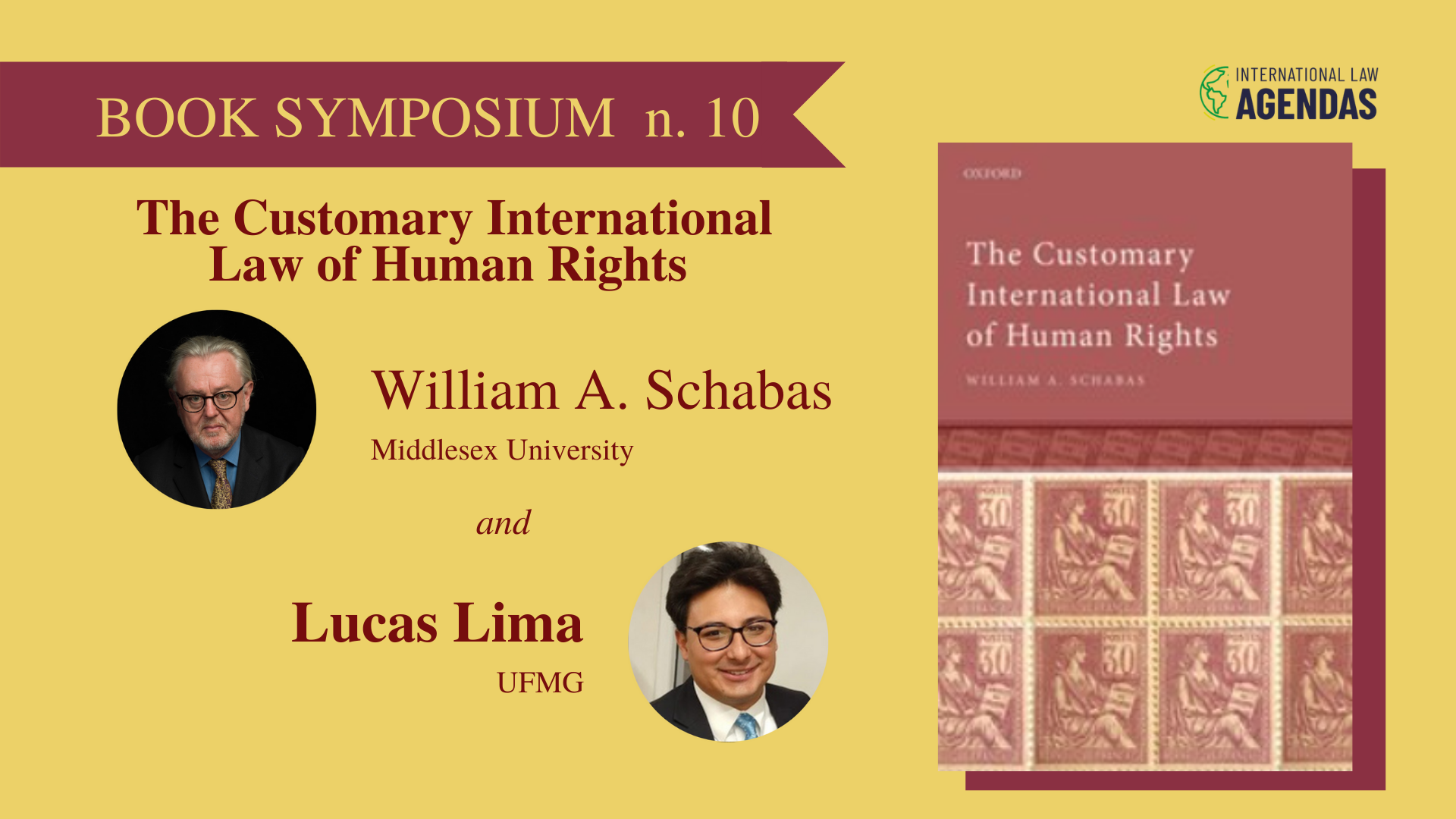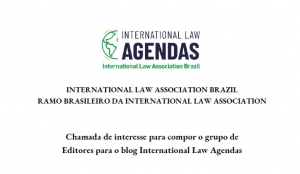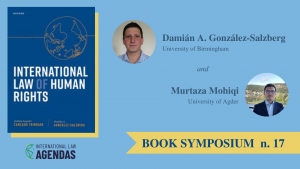It is a truism that general international law consists in a body of rules aimed at governing the lives of states and, sometimes, international organizations. Less clear is which of these rules have individuals at their centre and whether centring individuals could change something in the identification, scope, or effect of those rules. If one considers that international courts and tribunals – especially human rights courts – increasingly resort to customary international law, Professor Schabas’s thought-provoking book, The Customary International Law of Human Rights, raises and answers a myriad of riveting and timely questions. The book offers one of the first and already most consistent reactions to the problem of the impact of individual-protective norms in general international law, and in particular makes a persuasive case for the special nature of international human rights law vis-à-vis general international law.
Since 2012, when the International Law Commission (ILC) decided to include the topic of international customary international law in its programme of work, much has been written (here particularly) about custom in general, although little attention has been devoted specifically to debates on customary international human rights law. As it is well known, the ILC chose not to create a distinction between general and special rules for identifying international customary law: in order to identify customary rules relating to human rights, the strict criteria of practice and opinio juris (the two-element approach) shall be applied, without prevalence of one element over the other. In this sense, Professor Schabas’ book is also a stimulating test for the ILC’s project of Conclusions. I will come back to this point later.
The book’s undeniable key strength is the author’s long experience in the field of human rights and the amount of practice examined and referenced, taking into account different legal systems. Reading the book is a masterclass on how states behave and where one should look for state practice and opinio juris regarding human rights law – there is a profound richness in Professor Schabas’ examination of each of the rights involved.
Of course, it is possible to agree with or contest the meaning of some of Professor Schabas’ conclusions. By way of illustration, what does it mean to state as a fact that the right to property is not customary international law, but the right to intellectual property has already acquired this status? While Professor Schabas asserts that the right to self-determination of peoples has a peremptory character – something also suggested by the ILC in another project – the International Court of Justice has refrained from declaring such character. If Professor Schabas seems emphatic in including the right to a healthy environment as part of customary law, the Human Rights Council and its rapporteurs felt less compelled to do so, despite the abundant practice examined by the organ. Certainly, Professor Schabas’ conclusions, and any examination of what rules the international community considers binding on all its members, are open to debate. But the author makes this tension quite clear in his conclusions. Attractively, he reckons that it is an invitation to a necessary debate.
Be that as it may, there must be reasons that nudge certain institutions and states not to declare the customary character of certain rules (or to modulate its content and scope), and it would also be useful to understand the political and sociological explanations that demonstrate why there is some resistance in recognizing some international human rights rules as customary. In this sense, there are two specific reactions to Professor Schabas’ book that I wish to highlight in the remainder of this review. Firstly, the idea of particular customary law (and regional jus cogens) and, secondly, the approach of Professor Schabas’ book in relation to the method for identification of customary rules represented by the ILC project.
As to the question of whether there is regional customary law regarding international human rights, Professor Schabas rightly observes that “if the phenomenon of regional custom is well accepted in public international law, its application to human rights law is problematic.” (p. 91). He grounds his argument in three strands. First, there is no apparent regionalism in the codification conducted by the International Committee of the Red Cross. Second, the Universal Periodic Review “provides no indication that States consider there to be regional differences in the application of human rights principles” (p. 91). Third, the obstinate universalism of human rights, represented by the 1993 Vienna Declaration.
At the same time, Professor Schabas recognizes a certain degree of “regionalisation” of human rights law. Despite convergences, cross-fertilization and dialogues, regional human rights courts sometimes develop different approaches to specific rights (e.g. economic, social and cultural rights, or the right to a healthy environment) or different interpretative techniques that impact in the respective region (margin of appreciation, European consensus, pro persona interpretation, etc.). Would it be reasonable to conceive that these differences allowed the existence of different bodies of customary rules?
Two questions can be raised in this regard: why do regional courts refrain from using more frequently the category of regional customary law? And, at the end of the day, is it impossible to identify a body of practice and regional opinio juris that would amount to regional human rights custom? As to the first question, certainly the adherence to the universal character of customary rules utterly enhances the value of a certain rule before local audiences. In this regard, one can think that, in recent times, the Inter-American Court of Human Rights seems particularly prone to identifying customary rules, paying lip service to the ILC’s two-element approach, while relying on assertive techniques (see here) in order to declare a certain rule as customary. Concomitantly, it seems even more difficult for the Inter-American Court to recognize the existence of a regional customary rule, which, to a certain extent, corresponds to the ILC’s approach to the matter. This phenomenon might help explain why there seems to exist some holding back in recognizing certain rules as international customary law.
A directly related topic addressed by Professor Schabas regards regional jus cogens.[1] The universalist vocation of human rights rules (and its eventual peremptoriness) sometimes prevents the emergence of agreement and, therefore, the emergence of a general practice. But one might wonder whether, after reading Professor Schabas’ book, the ILC’s method for identification of international customary rules is accurate regarding human rights law. Here I address the second point I would like to raise.
While observing that the “International Law Commission gave short shrift to the suggestion that special rules governed the identification of customary rules of international human rights law” (p. 41), Professor Schabas does not entirely diverge from the conclusions adopted by the ILC in 2018. This point certainly deserves further reflection and debate. For instance, Professor Schabas’ reliance (p. 105) on the engagement of states in the Universal Periodic Review process, the tendency of certain courts to use specific interpretation techniques, and the great weight attributable to general comments and human rights interpretative bodies may perhaps indicate that there is not a great divergence in the identification of human rights rules. Ultimately, these would be shortcomings to qualified state practice and opinio juris. However, there are certain particularities that must be considered so that one can reliably identify not only the existence of a norm, but its exact content.
This accurate exercise serves not only to explain which rule has a customary character, but also the content, scope and effects of the customary rule. When considering Professor Schabas’ conclusions as to which rights actually possess a customary character, there will perhaps be little debate. As one begins to specify the content of the right (e.g., the right to a fair trial), perhaps disagreements over its customary features will increase. The same applies to the effects of the peremptoriness of certain human rights rules.
When Professor Schabas observes that “A challenge to the two-element approach or a demand for some exceptional treatment dictated by the special features of international human rights law is unnecessary” (p. 39) he is probably right. At the same time, his book seems to offer consistent evidence that, for the cautious identification of international human rights customary rules, one should keep the particularities of the field in mind.
Previous post / Following post
___________________
Footnotes
[1] LC Lima, L Marotti, ‘An Unlikely Duo? Regionalism and Jus Cogens in International Law’ (2022) 12 Goettingen Journal of International Law (forthcoming)
-

Professor de Direito Internacional Público da Universidade Federal de Minas Gerais. Coordenador do Grupo de Pesquisa em Cortes e Tribunais Internacionais CNPq/UFMG. Membro da Diretoria da ILA-Brasil.





